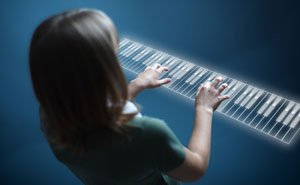 Previously we have discussed some DAW basics, how it works and how you can use it as a tool for your recordings. See our post What Is A DAW? It Means Digital Audio Workstation.
Previously we have discussed some DAW basics, how it works and how you can use it as a tool for your recordings. See our post What Is A DAW? It Means Digital Audio Workstation.
Now that all of these are in place here are a few tips on how to create your first song in your DAW.
First and foremost, you will need to understand what tracks are.
Once you open your DAW your first step is always to create the first track in your project. You can create a different track for individual instruments, voices, etc.
Using MIDI and virtual instruments make it easy to create incredibly realistic music without having to know how to play those different instruments in real life:). You just enter the notes with a MIDI keyboard. Check out our video and post about how to do this in my favorite DAW, Reaper, here: Audio Recording Awesomeness – Virtual Instruments.
If you don’t have a MIDI keyboard, you can always to choose to play using the virtual keyboard, which uses your computer’s own keyboard, and you are good to go.
Read more here: http://www.musictech.net/2017/06/complete-guide-daws-create-first-song/
Recording Software
DAW 101: Understanding The Basics
MusicTech has recently released a beginners section for to those who are new to the audio recording. They thought it would be best to start with the central piece of any recording studio doing multi-track recording, the Digital Audio Workstation – better known as the DAW.
Trivia: DAW’s were once called sequencers: a component whether software or hardware that enables you to make tunes by sequencing or arranging notes. They were first made popular and possible by computers.
MIDI or Musical Digital Interface is what was and is still being used today to record many of those digital notes to your DAW’s to create sequences to your desire.
Here is the link to MusicTech’s guide to DAWs: http://www.musictech.net/2017/06/complete-guide-daws-part-1/
Switching DAW's While Recording; A Big No!
Graham Cochrane of recordingrevolution.com in this video proves that switching DAWs while recording is not just a metaphor (get it – switching horses in the middle of the stream…no? OK, nevermind :-P), but can really affect your recordings in a bad way.
BTW, if you are wondering what a DAW is, check out my post What Is A DAW? It Means Digital Audio Workstation.
Graham has 8 years+ experience not just recording, but creating videos as well. Graham answers questions here from from beginners and professionals about how switching from one recording software to a totally different one may hurt your output.
Why would anyone switch DAWs anyway? Well, it almost always has to do with what my wife calls the “ooo, shiny” syndrome. Someone starts a project in one program, and then hears about a new and “better” program.
Watch full video here: https://www.recordingrevolution.com/switching-daws-can-ruin-your-recordings/
Reason 9.5 By Propellerhead
Reason, Propellerhead’s DAW, has just released version 9.5 to support the demand of its followers who wanted several new features. It was slow in coming, but Propellerhead finally acceded to some user demands in 9.5. For one thing, it finally has support for VST instruments!
MusicTech calls Reason “the best environments for music making.” And now you can use your favorite 3rd-party VST instruments in that environment. This is huge news!
This version is free for Reason 9 users as a simple 200MB download. Once opened Reason 9.5 immediately scans for VST to implement your collection take note this process takes only a few minutes and you are good to go. Simply drag all instruments to the Reason Rack although appearing standard once you click then the actual instrument appears.
Read more here: http://www.musictech.net/2017/06/reason-9-5-review/
A Review Of MOK Waverazor Synthsizer
Waverazor is a synthesizer. As it says in the review, you put in MIDI notes, and Waverazor plays a sound.
It is software synth (as opposed to a piece of standalone hardware like in the old days), available as a 32-bit and/or 64-bit plugin for Windows and Mac systems.
Check out this video:
It offers a unique continuous modulation of various parameters in each waveform slice that can be very useful for evolving sounds. A lot of the sounds that can be made with Waverazor will remind you of 70’s to 90’s manipulated sounds.
It offers old and a few new options, but is it worth buying?
Read about the verdict here: http://bedroomproducersblog.com/2017/06/11/waverazor-review/